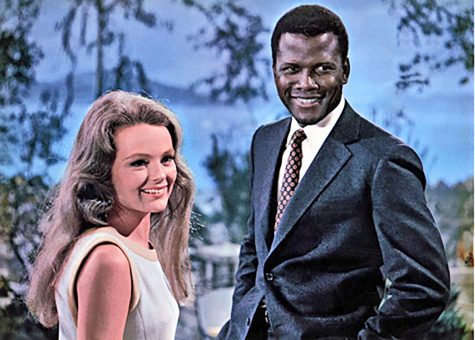Film addresses American beauty ideals
Gerren Taylor is 5-feet-10 inches tall, with a radiant smile and a picture-perfect body. She models for top designers and walks the runway in revealing clothes with a rare combination of attitude and confidence. She mingles at parties with giants of the modeling world.
What could be wrong with this picture? For starters, Gerren is 12 years old. So what is she doing in a skimpy bathing suit at an after party in Los Angeles? Filmmaker and director Darryl Roberts attempts to answer this question in his documentary America the Beautiful.
St. Edward’s University screened the film as part of Body Image Awareness Month. In the film, Roberts attempts to delve into American ideals about beauty and the dangers they can pose—from eating disorders to plastic surgery—and how these ideals are shaping the country.
Statistics in the film paint a picture of the growing problems associated with the unattainable standards of beauty that bombard Americans on a daily basis.
For example, the Massachusetts Eating Disorder Association reports, “15 percent of women ages 17 to 24 have eating disorders, and a survey of one college campus indicated that 91 percent of female college students attempted to control their weight through dieting.”
According to Roberts’ documentary, the United States contains 5 percent of the world’s population. That percent sees 40 percent of the world’s advertisements. The average American adolescent sees around 40,000 advertisements in one year, and many of these ads feature unrealistic portrayals of beauty.
While many young people are trying to reach this unattainable standard of beauty, it’s nearly impossible. High fashion photographer Marc Baptiste reveals the reality of the situation in the film. When asked by Roberts how these images can affect viewers, Baptiste laughed.
“We’re selling dreams,” he says. “It’s not real. It’s all a dream.”
But how are these images affecting young women, and even men, on college campuses? With a $1 billion a year ad industry, Americans cannot help but be swayed by what they see.
According to a survey of nine to 11-year-old American girls, 40 percent have tried dieting. In addition, girls as young as five years old have reported being on a diet. Roberts asks Eve Ensler, writer of The Vagina Monologues, about these disturbing statistics. Ensler encourages women to “find the beauty that’s already there.”
In one scene, Roberts is probing an anonymous as to why she wastes her time on unhealthy diets. The model, who is trying to lose 15 pounds in order to get work, stares blankly at Roberts and tells him, “If you’re going to worry about your health, go to college.”
Her words are shocking, but it seems that even on college campuses, students are taking measures to become more beautiful. Statistics show that American women, on average, use around 12 beauty products a day, many of which contain chemical ingredients most people can’t even pronounce.
The staff members of the counseling center are using Body Awareness Month to encourage SEU students to strive not for perfection, but for health and happiness – happiness obtained through healthy lifestyle choices and smart decisions, and not by buying into the impossible standards that American culture has set for them.
Those who want to find out more about Body Image Awareness Month or speak to a counselor about any issues they may have can visit the St. Edward’s Health Center located on the ground floor of Johnson Hall.





